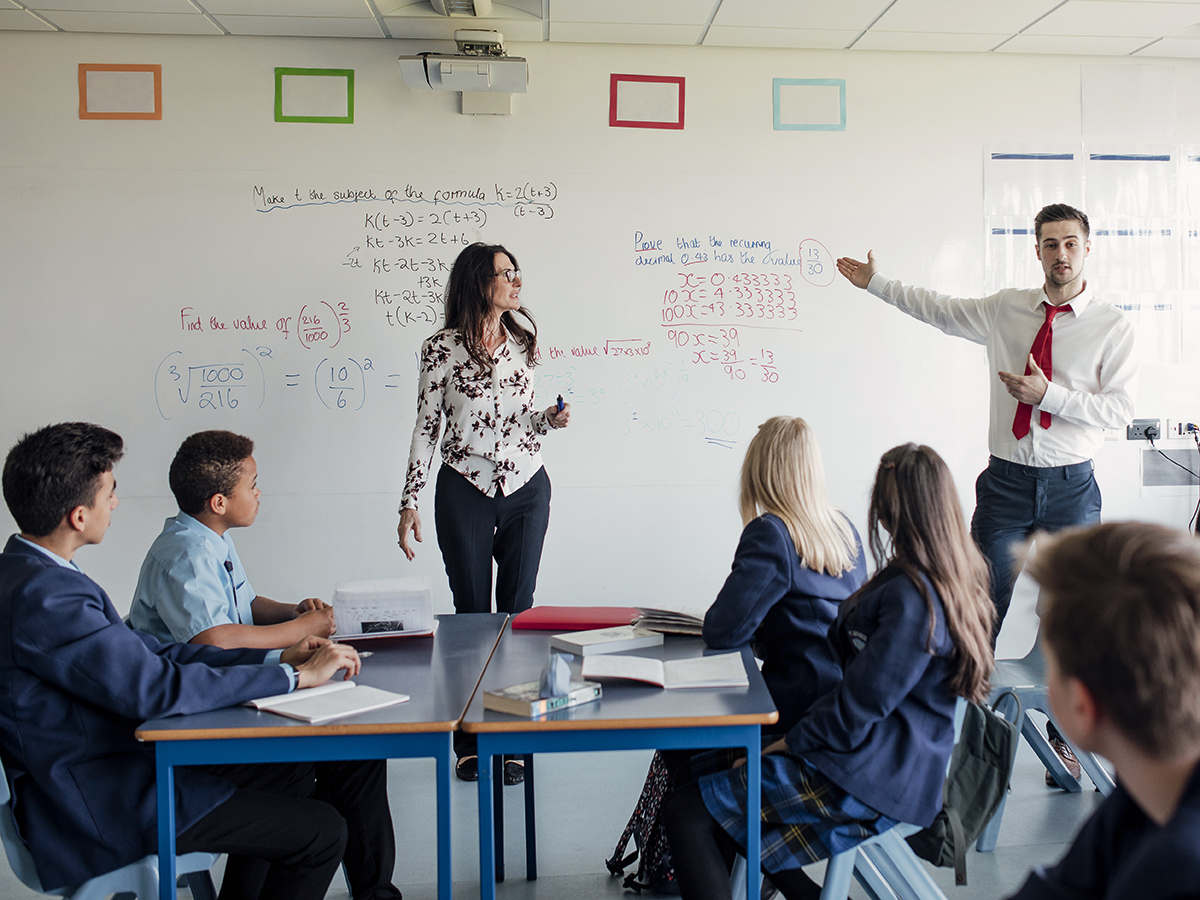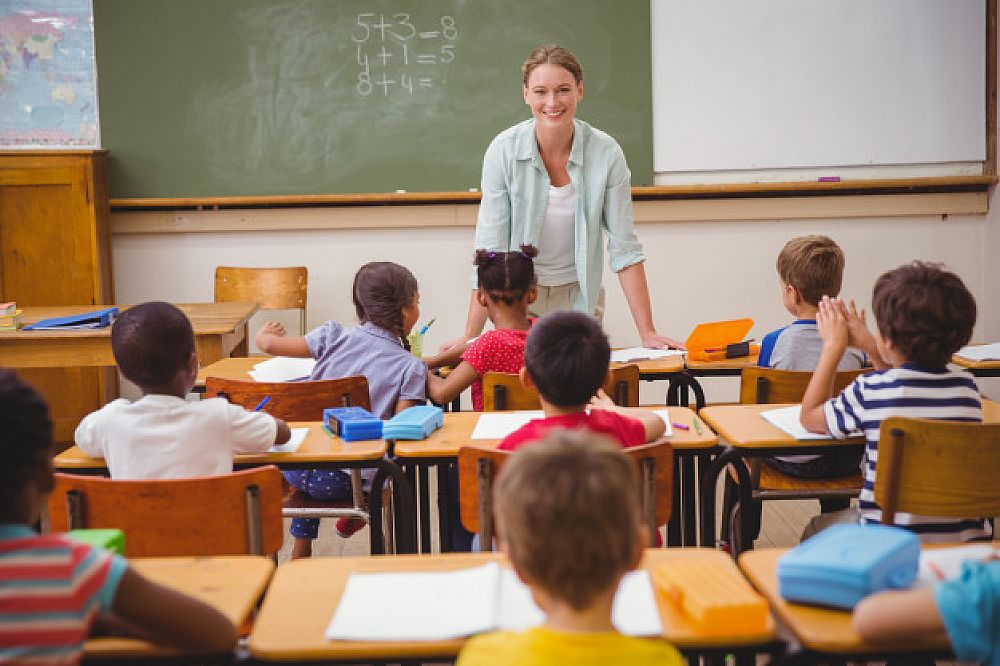A Comprehensive Guide to the Numerous Understanding Techniques in Main Science Guideline
The expedition of diverse learning approaches in main science guideline presents a possibility for teachers to enhance pupil interaction and understanding dramatically. By taking a look at hands-on knowing techniques, inquiry-based techniques, and collaborative approaches, we can determine reliable methods that accommodate different learning styles. In addition, the combination of modern technology and separated instruction plays a critical function in cultivating an inclusive atmosphere. Nonetheless, the concern continues to be: how can these techniques be effectively carried out in the class to maximize their effect? The response hinges on a closer assessment of each technique and its effects for teaching science.

Hands-On Discovering Strategies
Hands-on learning techniques play a critical function in main scientific research direction, involving pupils in energetic expedition and trial and error. These approaches permit students to connect directly with materials and phenomena, cultivating a much deeper understanding of clinical ideas. By utilizing manipulatives, designs, and real-life experiments, teachers produce an atmosphere where trainees can observe, hypothesize, and test their concepts.
Such strategies not just improve comprehension but also cultivate critical reasoning and analytic skills. When trainees participate in activities like constructing straightforward equipments, growing seeds, or carrying out chemical reactions, they are urged to ask inquiries and look for answers via their very own observations. This experiential approach aids to debunk complex scientific principles, making them extra relatable and obtainable.
Moreover, hands-on learning advertises partnership amongst peers, as trainees frequently function in groups to perform experiments or share findings. This teamwork not just enriches their discovering experience but additionally develops essential social skills. Ultimately, incorporating hands-on techniques in main scientific research direction cultivates a lifelong love of understanding and curiosity concerning the natural globe, laying a solid foundation for future scholastic pursuits in science and past.
Inquiry-Based Learning
Inquiry-based discovering is an instructional technique that urges students to ask concerns, explore phenomena, and build their very own understanding of scientific ideas. This approach shifts the focus from typical teacher-led instruction to a much more student-centered experience, where students take the initiative in their instructional journey. By cultivating curiosity, inquiry-based knowing advertises much deeper involvement with the product, allowing students to explore topics in a significant context.
In method, this strategy often involves hands-on experiments, observations, and crucial thinking activities that line up carefully with the scientific technique. Trainees are encouraged to formulate hypotheses, layout investigations, and assess information, which cultivates necessary abilities such as logical and analytic reasoning. The role of the educator in this framework is to facilitate exploration, directing students through the inquiry process while motivating independent thought and partnership.
Furthermore, inquiry-based knowing nurtures a feeling of possession over the knowing process, encouraging pupils to go after understanding actively. This approach not only enhances understanding of clinical ideas but also cultivates a lifelong love for learning, outfitting trainees with the skills essential to browse a progressively complex globe.
Collaborative Knowing Approaches
Collective learning approaches encourage students to involve in purposeful interactions with peers, promoting a shared duty for their instructional outcomes. In main science guideline, these approaches encourage learners to collaborate to check out clinical ideas, address troubles, and conduct experiments (primary science tuition Singapore). By taking part in group activities, students can take advantage of diverse point of views, permitting richer understanding and retention of clinical understanding
One secret element of joint understanding is the focus on interaction abilities. Pupils have to express their ideas, listen actively to others, and work out ideas, all of which are crucial competencies in both real-world and scholastic contexts. This social communication not just improves their understanding of scientific principles yet additionally advertises team effort and conflict resolution skills.
When pupils see the value of their payments within a group, they are a lot more most likely to take ownership of their discovering trip. In general, including collaborative more information discovering approaches in primary scientific research guideline cultivates a dynamic understanding environment that prepares trainees for future scholastic and social obstacles.
Technology Combination in Scientific Research
The assimilation of technology in main scientific research guideline enhances learning experiences by offering cutting-edge devices and sources that support various mentor methods, consisting of joint learning - primary science tuition Singapore. The use of digital platforms, simulations, and interactive applications enables trainees to engage deeply with scientific ideas, promoting an extra hands-on approach to learning
Virtual labs, for instance, allow learners to carry out experiments safely and efficiently, promoting inquiry-based learning. These tools pop over to this web-site can simulate real-world clinical situations, enabling trainees to imagine complex processes that would certainly be hard to reproduce in a standard classroom setting. Modern technology promotes communication and cooperation amongst students, as they can share searchings for and function together on tasks with online systems.
Furthermore, multimedia presentations and instructional videos can enrich lessons by dealing with diverse understanding styles, making abstract principles a lot more available. Information analysis devices likewise empower trainees to collect and analyze scientific information, reinforcing essential believing abilities. In general, the strategic consolidation of technology in main scientific research direction not just enhances interaction but likewise prepares pupils for a technologically innovative culture, furnishing them with crucial skills for future clinical undertakings.
Distinguished Direction Strategies
Distinguished direction approaches are vital for resolving the varied needs of learners in main scientific research education and learning. These strategies allow teachers to customize their training methods to accommodate varying capabilities, interests, and discovering styles within the classroom. By utilizing set apart guideline, teachers can create an inclusive environment that fosters interaction and improves understanding of scientific ideas.
One efficient method is to utilize versatile grouping, which enables students to collaborate with peers at similar ability degrees or with varying viewpoints. This technique urges peer discovering and advertises vital thinking. Additionally, offering choices in jobs can encourage pupils, enabling them to choose projects that resonate with their passions while still fulfilling curricular goals.
Additionally, integrating tiered assignments is another beneficial strategy. Deliberately tasks with varying degrees of complexity, educators can make certain that all trainees are properly tested, despite their proficiency. Making use of developmental assessments to determine comprehending further enables instructors to adjust their educational techniques dynamically, ensuring that each student receives the assistance they need.
Ultimately, carrying out distinguished guideline techniques in key science education not only boosts student discovering outcomes however additionally cultivates an interest for science, preparing index trainees for future scholastic pursuits.

Final Thought
In recap, reliable primary science instruction necessitates a diverse technique that includes hands-on understanding, inquiry-based approaches, and joint strategies. The integration of technology and differentiated instruction further caters to diverse learning styles, cultivating a setting helpful to expedition and important reasoning.
The expedition of varied discovering techniques in primary science guideline offers a possibility for teachers to improve student engagement and understanding dramatically.Hands-on understanding methods play an essential function in primary scientific research direction, engaging students in energetic exploration and experimentation.Inquiry-based learning is an educational technique that encourages pupils to ask concerns, examine phenomena, and create their own understanding of clinical ideas.Collaborative understanding techniques empower pupils to engage in purposeful communications with peers, fostering a common responsibility for their instructional outcomes. On the whole, integrating joint discovering approaches in key science guideline cultivates a vibrant learning atmosphere that prepares pupils for future academic and social obstacles.
Comments on “Personalized Primary Science Tuition Singapore to Cater to Your Child’s Needs”